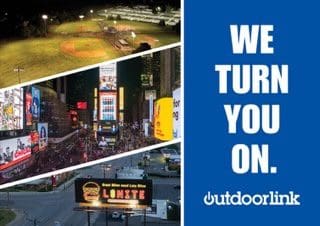(Part 1, yesterday, Richard Hamlin described a court decision banning all marijuana advertising on Interstate Highways within California and on State Highways that cross its border. The decision struck down a regulation that banned such advertising only within 15 miles of the state’s border. The decision found the regulation to be inconsistent with the statute legalizing marijuana. The decision is not yet a judgment. Until then, the judge can reconsider and change the result.)

In 2016, California voters legalized marijuana through an initiative. That is, legalization did not originate in the legislature, but through signatures on a petition. When enough voters sign a petition, it goes on the ballot.
When voters approve an initiative, the legislature cannot change it unless the initiative itself gives the legislature that power. Proposition 64 gave the legislature the power to “enact laws to implement this division” if consistent with the purposes of Proposition 64.
In describing Proposition 64, the California’s Legislative Analyst’s Office noted that federal law then made it illegal to possess or use marijuana. It also noted that the U.S. Department of Justice chose, mostly, not to prosecute most marijuana users or businesses if they followed state law and if state law were consistent with federal priorities. Among those priorities were preventing marijuana from being taken to other states.
In that context a regulation banning marijuana advertising within fifteen miles of California’s borders would be consistent with one purpose of the initiative, to reduce the risk of federal intervention. On the other hand, if the initiative intended to limit advertising, the legislature would have no power to change the statute.
Complicating the issue, none of this was addressed in the trial court. No one raised any First Amendment issues in the trial court. Normally, nothing can be raised on appeal unless first raised before the trial judge. If the decision stands, it will have a major impact on OOH in California. There are a couple possible solutions.
Legislative: Attempt to persuade the state assembly, senate, and governor to amend the statute that bans marijuana advertising on interstates and on state highways that cross California’s border. There will be an issue about the legislature’s power to do this.
Judicial: Ask Judge Garrett for permission to raise these issues. About two-thirds of her decision discussed whether the issues were the subject of a true dispute, and whether the plaintiff had standing to raise them. Arguably, OOH and the cannabis industry should have both had notice of the case and the opportunity to be heard.
Conclusion: The decision will have a major impact on OOH in California, but the industry has had not opportunity to be heard. We suggest the industry ask J. Garrett for permission to intervene as a party, or to file a friend-of-the-court brief. If the industry is going to attempt this, it should be done quickly. The judge can reconsider her decision only until she signs a judgment based on the decision, which will occur in a matter of days.
[wpforms id=”9787″]
Paid Advertisement

















